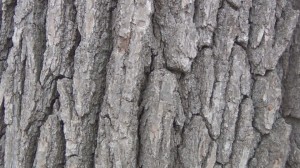Natural Geometry in Jackson Pollock’s Paintings

Argued by many to be the greatest American painter of all time, Jackson Pollock personified the polarization of:
1. The destructiveness of alcoholism, sloth, and anger
2. The beauty of artistic expression inspired by nature
By 1946 at the age of 34 Jackson Pollock was already a respected painter, but among his fellow humans he was an absolute mess. An alcoholic prone to bouts of violent rage and deep depression, Pollock was nonetheless artistically good enough to earn a $2000 loan from the renowned collector and socialite, Peggy Guggenhiem. Pollock’s wife, artist Lee Krasner, decided they would invest the money in a country home in Eastern Long Island, where she and Pollock could live in peace and sobriety, away from the turmoil of the city and drama of its people. The decision was a good one. Freed from the stressors of modern life and man-made things, Pollock experienced serenity in nature. This is where he developed his drip and splash technique which led to his success and fame, propelling him onto the cover of Life Magazine in 1949 and into a spotlight far too bright for his fragile emotional sensibilities. He went back to drinking and died in 1956 in a drunken rage-fueled car crash. Now his original works sell for tens of millions of dollars a piece. To further the legend, in 2000 the biographical film Pollock was released to wide acclaim, while both Ed Harris and Marcia Gay Harden received Oscar nominations for their portrayals of Jackson Pollock and Lee Krasner, respectively.
Pollock’s life and art has been dissected and analyzed by psychologists, art theorists, architects, and other scientists attempting to explain the appeal of Pollock’s revolutionary style: Why do Pollock’s messy-looking paintings elicit such strong aesthetic reactions and high prices, and what is it about Pollock himself which enabled him to produce such masterpieces? Through rigorous mathematical analyses and physiological testing, Dr. Richard Taylor at the University of Oregon has arrived at a remarkable conclusion: The patterns in Pollock’s paintings are direct examples of the fractal geometry of nature, and it is this geometry which produces the strong positive responses in the viewer. Somehow, through a mysterious process of observing nature combined with a full-body movement painting technique, Pollock’s mind absorbed (subconsciously?) this geometry and his limbs and torso managed to produce patterns which exhibit the same visual qualities found in nature, even though his paintings are technically considered “abstract”. Furthermore, using measurements in skin conductivity, EEG’s, and FMRI’s, Taylor has demonstrated that what pleases the mind and eye most is a particular fractal dimension – a degree of complexity in a fractal structure which strikes a specific empirical balance between sparse and cluttered. Evolutionary biologists theorize that this preference was selected for as a means of ensuring that our ancestors favored a combination of open spaces for prospecting (for prey) and closed spaces for refuge (from predators): An imbalance in either direction would jeopardize survival. Jackson Pollock’s early drip paintings started out in the “sweet zone” of fractal dimension, but gradually became more and more congested (higher fractal dimensions) according to Dr. Taylor’s measurements. It seems as if Jackson Pollock had a deep yearning for peace, which he found in nature and created on the canvas; but then his success moved him back into the man-made social environment, and he literally lost himself in the refuge……into a tree trunk to be exact…..ironically.


